-
 Bitcoin
Bitcoin $83,080.8873
-1.14% -
 Ethereum
Ethereum $1,791.4746
-1.45% -
 Tether USDt
Tether USDt $0.9998
0.02% -
 XRP
XRP $2.1324
-0.13% -
 BNB
BNB $592.0388
-1.08% -
 Solana
Solana $119.1957
-3.22% -
 USDC
USDC $1.0001
0.01% -
 Dogecoin
Dogecoin $0.1681
-1.64% -
 Cardano
Cardano $0.6497
-1.94% -
 TRON
TRON $0.2375
-0.61% -
 UNUS SED LEO
UNUS SED LEO $9.0588
-4.96% -
 Chainlink
Chainlink $12.6860
-2.48% -
 Toncoin
Toncoin $3.2620
-3.95% -
 Stellar
Stellar $0.2511
-3.60% -
 Avalanche
Avalanche $17.8165
-2.01% -
 Shiba Inu
Shiba Inu $0.0...01230
-0.03% -
 Sui
Sui $2.2118
-2.95% -
 Hedera
Hedera $0.1616
-2.22% -
 Litecoin
Litecoin $82.0450
-2.73% -
 Polkadot
Polkadot $3.9414
-2.77% -
 MANTRA
MANTRA $6.2727
-0.36% -
 Bitcoin Cash
Bitcoin Cash $300.4768
-0.31% -
 Dai
Dai $1.0001
0.02% -
 Bitget Token
Bitget Token $4.4469
-1.89% -
 Ethena USDe
Ethena USDe $0.9991
0.00% -
 Pi
Pi $0.5875
11.07% -
 Hyperliquid
Hyperliquid $11.8527
-4.06% -
 Monero
Monero $214.0698
-0.86% -
 Uniswap
Uniswap $5.8104
-2.14% -
 OKB
OKB $51.8157
5.85%
How to choose the best profit plan through the mining pool's PPLNS and PPS modes?
PPLNS offers higher potential rewards but with risk, while PPS provides consistent income; choose based on your hashing power and risk tolerance.
Mar 30, 2025 at 08:28 pm
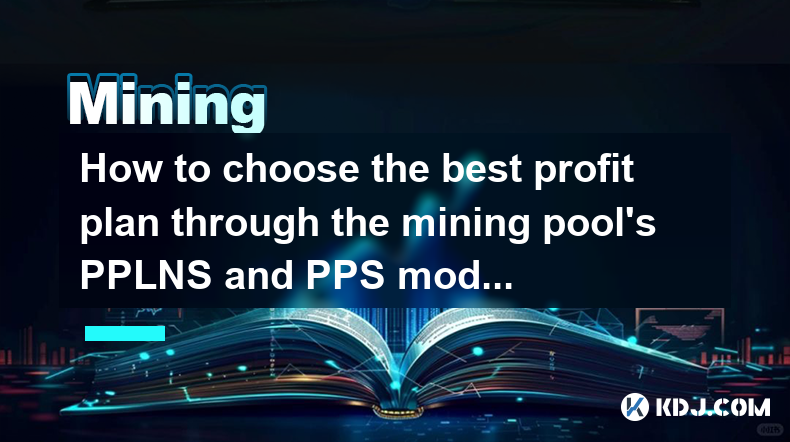
Understanding PPLNS and PPS Mining Pool Payment Systems
Choosing the right mining pool and payment system is crucial for maximizing your cryptocurrency mining profits. Two prevalent systems are Pay Per Last N Shares (PPLNS) and Pay Per Share (PPS). Understanding their differences is key to making an informed decision. Both methods offer different risk/reward profiles, and the best choice depends on your individual circumstances, particularly your hashing power and risk tolerance.
Deconstructing PPLNS: Pay Per Last N Shares
PPLNS rewards miners based on their contribution to the last 'N' shares found by the pool. 'N' represents a variable number of shares, often adjusted by the pool operator. The larger your share of the last N shares, the larger your payout when a block is found. This system offers potentially higher returns if the pool finds blocks frequently, but carries the risk of receiving little to nothing if the pool experiences a prolonged period without finding a block, even if you've contributed significantly. Your reward is directly proportional to your contribution to the recently solved blocks.
- Advantage: Potential for higher payouts during periods of high block discovery.
- Disadvantage: Significant risk of receiving low or no rewards during periods of low block discovery. This can be particularly detrimental to smaller miners with less consistent hashing power.
Understanding PPS: Pay Per Share
PPS, in contrast, provides a fixed payment for each share submitted, regardless of whether the pool finds a block. You receive a predetermined payment for every valid share you contribute to the pool's mining efforts. This eliminates the risk associated with periods of low block discovery inherent in PPLNS. However, the payment per share is generally lower than what you might earn under PPLNS during lucky streaks. The pool operator assumes the risk of block discovery.
- Advantage: Consistent and predictable income, regardless of the pool's success in finding blocks.
- Disadvantage: Lower payout per share compared to potentially higher payouts under PPLNS during periods of high block discovery.
Factors to Consider When Choosing Between PPLNS and PPS
Several factors influence the optimal choice between PPLNS and PPS. Your hashing power is paramount. Larger miners with consistent hashing power are better positioned to benefit from PPLNS's higher potential payouts. Smaller miners might find PPS's consistent income stream more appealing, as it provides a more stable and predictable revenue stream, mitigating the risk of long dry periods.
The pool's performance also plays a crucial role. A high-performing pool with a high block discovery rate might make PPLNS more attractive. Conversely, a pool with a lower block discovery rate might favor PPS, ensuring a more reliable income stream. The fees charged by the pool are also a significant consideration. While some pools offer lower fees for PPLNS, others might charge higher fees for PPS. Carefully compare the effective payout rates considering both the base payout and fees.
Your risk tolerance is another key element. If you are risk-averse, PPS is the more conservative option, providing a steady income stream. If you're willing to accept higher risk for potentially higher rewards, PPLNS might be more appealing. However, remember that the higher potential rewards in PPLNS come with the risk of earning significantly less or nothing at all during periods of low block discovery.
Analyzing Your Mining Operation for Optimal Strategy
Before selecting a payment system, carefully evaluate your mining operation. Consider your hashing power, its consistency, and your overall risk tolerance. Assess the pool's historical performance, looking at its block discovery rate and the frequency of periods with low block discovery. This data can help you predict the potential profitability of each system.
Consider also the fees charged by the pool. These fees can significantly impact your final earnings. Compare the effective payout rates of different pools offering both PPLNS and PPS, factoring in their respective fees. This allows for a more accurate comparison of profitability. Remember that the "best" system is highly dependent on your individual circumstances and the specific pool you are considering.
Beyond the Basics: Other Factors to Consider
Beyond PPLNS and PPS, other factors influence your mining profitability. Pool size and its overall hash rate matter significantly. Larger pools often have a higher block discovery rate, potentially benefiting PPLNS miners. However, larger pools can also lead to increased competition and potentially lower individual rewards. The pool's infrastructure and reliability are also crucial considerations. Choose a pool with a stable and reliable infrastructure to avoid disruptions to your mining operation.
Long-Term Perspective: Adaptability and Diversification
Mining profitability can fluctuate based on several factors, including network difficulty, cryptocurrency price, and the pool's performance. Maintaining flexibility in your mining strategy is important. Consider diversifying your mining across multiple pools and potentially experimenting with both PPLNS and PPS to balance risk and reward. This reduces your dependence on any single pool's performance and helps mitigate potential losses.
Regularly monitor your mining performance and adjust your strategy as needed. Keep track of your earnings, fees, and the pool's performance to identify areas for improvement. Staying informed about changes in the cryptocurrency market and mining landscape is vital for making informed decisions and maximizing your profitability.
Frequently Asked Questions
Q: Which system, PPLNS or PPS, is better for small miners?
A: PPS generally offers better stability and predictability for smaller miners due to its consistent payout regardless of block discovery. The risk of long dry periods in PPLNS can be particularly damaging to smaller miners with limited hashing power.
Q: What is the impact of network difficulty on PPLNS and PPS?
A: Increased network difficulty reduces the probability of finding blocks for both systems. However, the impact is more pronounced on PPLNS, as it directly affects the frequency of payouts. PPS offers more stability in this scenario, providing a consistent income regardless of the network difficulty.
Q: How do pool fees affect the choice between PPLNS and PPS?
A: Pool fees reduce the net profit from both systems. Carefully compare the effective payout rates (payout minus fees) of different pools offering both PPLNS and PPS to make an informed decision. A pool with seemingly higher base payouts but higher fees might not be as profitable as one with lower base payouts but lower fees.
Q: Can I switch between PPLNS and PPS within the same mining pool?
A: This depends on the specific pool. Some pools offer both options, allowing you to switch between them as needed, while others may only offer one payment system. Check the pool's terms and conditions to see if switching is possible.
Q: Is there a way to predict which system will be more profitable at any given time?
A: No, predicting the profitability of PPLNS versus PPS with certainty is impossible. The profitability of PPLNS depends heavily on the pool's luck in finding blocks, which is inherently unpredictable. While PPS offers more predictability, its lower per-share payout makes it less profitable during periods of high block discovery. Careful monitoring of the pool's performance and market conditions is key.
Disclaimer:info@kdj.com
The information provided is not trading advice. kdj.com does not assume any responsibility for any investments made based on the information provided in this article. Cryptocurrencies are highly volatile and it is highly recommended that you invest with caution after thorough research!
If you believe that the content used on this website infringes your copyright, please contact us immediately (info@kdj.com) and we will delete it promptly.
- The US Government's Strategic Crypto Reserve Will Be Unveiled This Saturday
- 2025-04-06 05:40:12
- Fartcoin (FAR) price soared 32% to trade at $0.5155
- 2025-04-06 05:40:12
- If Shiba Inu Doubles the Market Cap of Dogecoin, It Could Move Close to Surpassing Its Previous All-Time High (ATH)
- 2025-04-06 05:35:12
- USDtb Breaks into the Top 10 Stablecoins by Market Cap, Tether Loses 60% of Market Dominance
- 2025-04-06 05:35:12
- Meme Coin Mayhem: Markets Stagger, But Troller Cat Roars Ahead
- 2025-04-06 05:30:12
- I'm known for my optimism. I try to give people something to build, not just something to worry about.
- 2025-04-06 05:30:12
Related knowledge
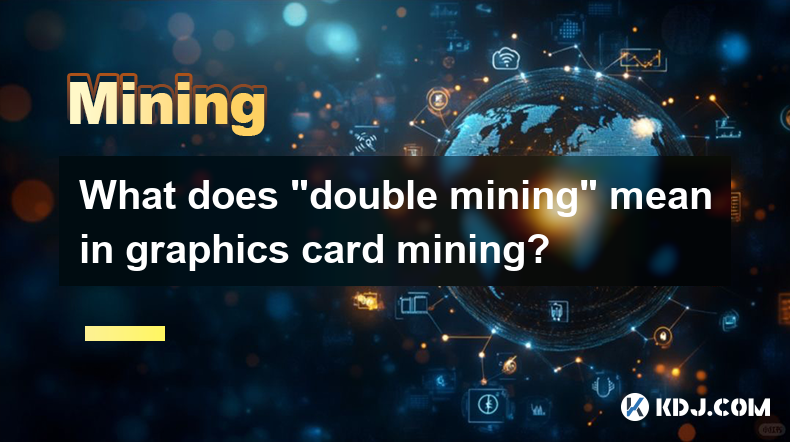
What does "double mining" mean in graphics card mining?
Apr 04,2025 at 08:35pm
In the world of cryptocurrency, the term 'double mining' refers to a specific technique used in graphics card mining to maximize the efficiency and profitability of mining operations. This method involves simultaneously mining two different cryptocurrencies using the same graphics card. The concept of double mining has gained popularity among miners who...
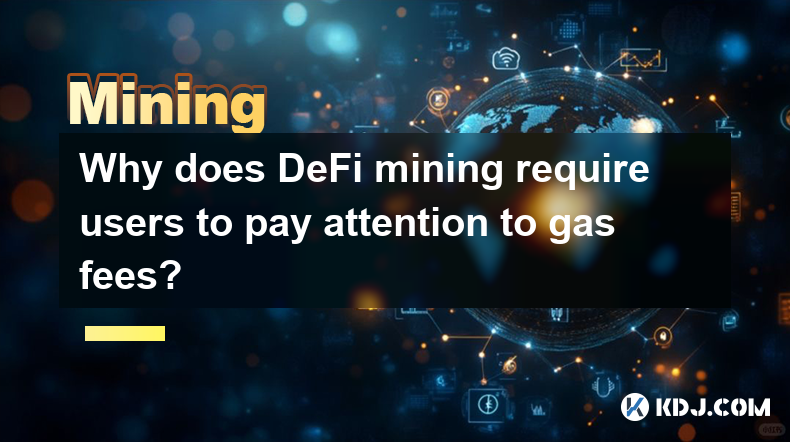
Why does DeFi mining require users to pay attention to gas fees?
Apr 05,2025 at 10:28am
DeFi mining has become a popular way for users to earn passive income in the cryptocurrency space. However, one aspect that users must pay close attention to is gas fees. Gas fees are transaction fees on the Ethereum network, and they play a crucial role in the DeFi mining process. Understanding why gas fees are important and how they affect DeFi mining...

What is the market prospect of CPU mining currency?
Apr 04,2025 at 09:14am
The concept of CPU mining currency has gained traction in the cryptocurrency community due to its accessibility and potential for decentralization. Unlike GPU or ASIC mining, which often requires significant investment in specialized hardware, CPU mining can be performed using standard computer processors. This makes it an attractive option for individu...
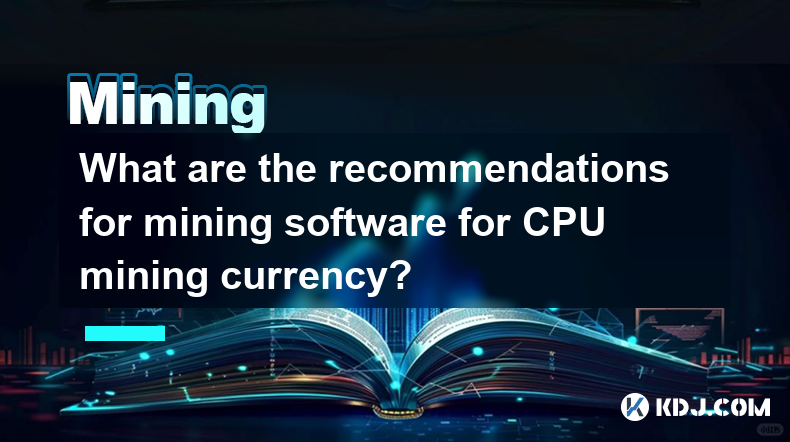
What are the recommendations for mining software for CPU mining currency?
Apr 05,2025 at 05:49pm
CPU mining, while less efficient than GPU or ASIC mining, can still be a viable option for mining certain cryptocurrencies. This article will explore the best software options available for CPU mining, providing detailed recommendations and insights into their features and performance. Understanding CPU MiningCPU mining involves using a computer's centr...
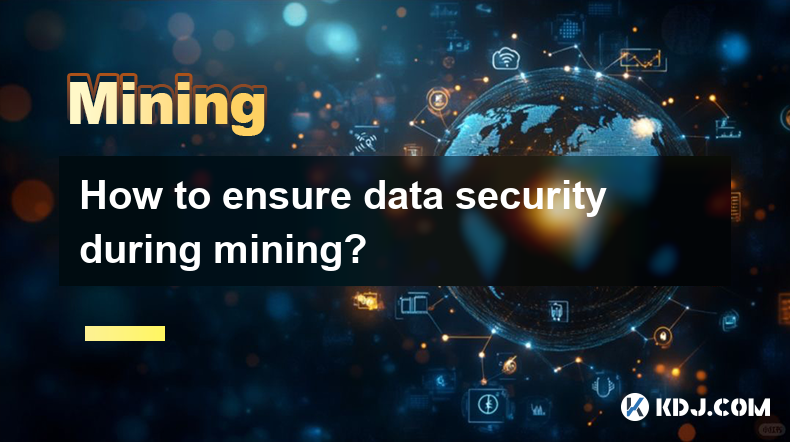
How to ensure data security during mining?
Apr 05,2025 at 08:28am
Ensuring data security during mining is crucial, as miners handle sensitive information and perform transactions that need to be protected against unauthorized access and cyber threats. This article will delve into various strategies and best practices to secure data during the mining process, focusing on the cryptocurrency sphere. Understanding the Ris...
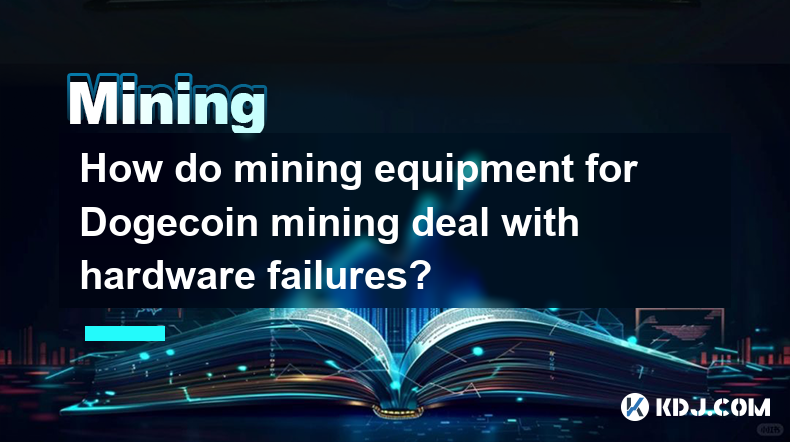
How do mining equipment for Dogecoin mining deal with hardware failures?
Apr 03,2025 at 09:15am
Dogecoin mining, like other forms of cryptocurrency mining, relies heavily on specialized hardware to perform the necessary computations to mine new coins. However, as with any technology, mining equipment can encounter hardware failures. This article will explore how mining equipment for Dogecoin mining deals with such failures, covering various aspect...

What does "double mining" mean in graphics card mining?
Apr 04,2025 at 08:35pm
In the world of cryptocurrency, the term 'double mining' refers to a specific technique used in graphics card mining to maximize the efficiency and profitability of mining operations. This method involves simultaneously mining two different cryptocurrencies using the same graphics card. The concept of double mining has gained popularity among miners who...

Why does DeFi mining require users to pay attention to gas fees?
Apr 05,2025 at 10:28am
DeFi mining has become a popular way for users to earn passive income in the cryptocurrency space. However, one aspect that users must pay close attention to is gas fees. Gas fees are transaction fees on the Ethereum network, and they play a crucial role in the DeFi mining process. Understanding why gas fees are important and how they affect DeFi mining...

What is the market prospect of CPU mining currency?
Apr 04,2025 at 09:14am
The concept of CPU mining currency has gained traction in the cryptocurrency community due to its accessibility and potential for decentralization. Unlike GPU or ASIC mining, which often requires significant investment in specialized hardware, CPU mining can be performed using standard computer processors. This makes it an attractive option for individu...

What are the recommendations for mining software for CPU mining currency?
Apr 05,2025 at 05:49pm
CPU mining, while less efficient than GPU or ASIC mining, can still be a viable option for mining certain cryptocurrencies. This article will explore the best software options available for CPU mining, providing detailed recommendations and insights into their features and performance. Understanding CPU MiningCPU mining involves using a computer's centr...

How to ensure data security during mining?
Apr 05,2025 at 08:28am
Ensuring data security during mining is crucial, as miners handle sensitive information and perform transactions that need to be protected against unauthorized access and cyber threats. This article will delve into various strategies and best practices to secure data during the mining process, focusing on the cryptocurrency sphere. Understanding the Ris...

How do mining equipment for Dogecoin mining deal with hardware failures?
Apr 03,2025 at 09:15am
Dogecoin mining, like other forms of cryptocurrency mining, relies heavily on specialized hardware to perform the necessary computations to mine new coins. However, as with any technology, mining equipment can encounter hardware failures. This article will explore how mining equipment for Dogecoin mining deals with such failures, covering various aspect...
See all articles





















































































